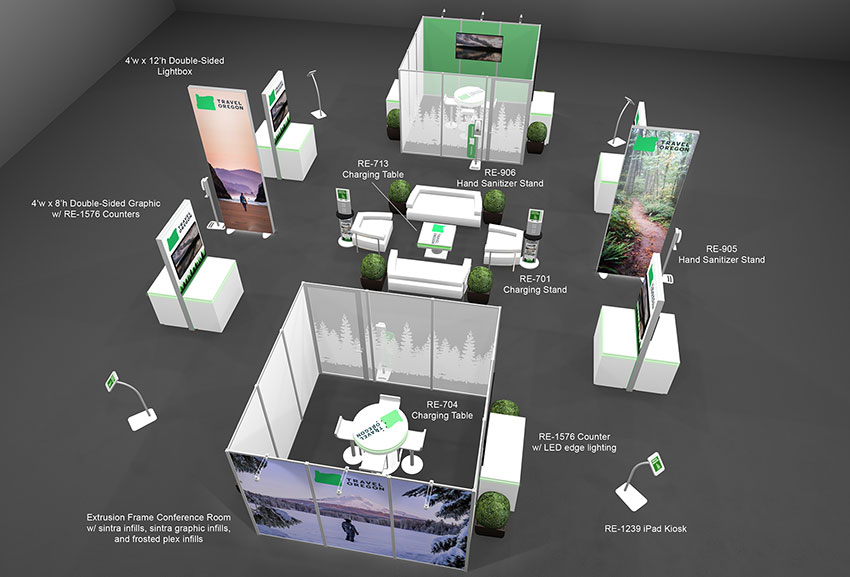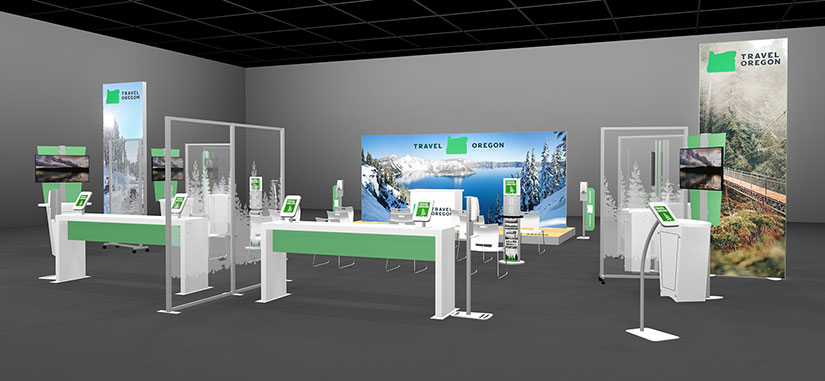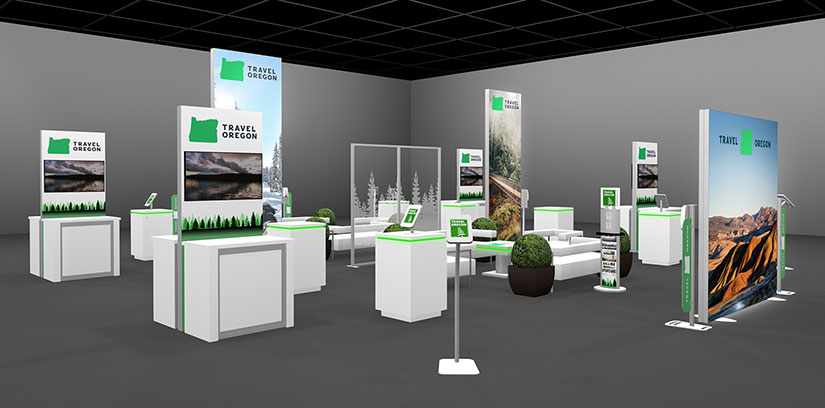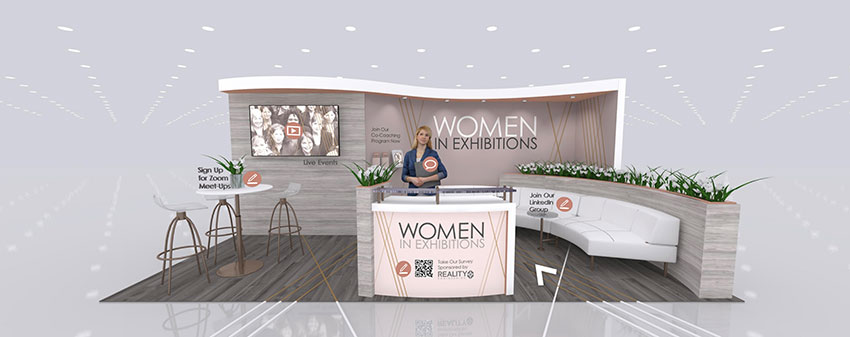Exhibit Design Search / Trade Show and Event Tips / USA Trade Show Regulations and Photos /
Designing for Post-COVID Trade Shows
How will Designers Design for Post-COVID Trade Shows?
 The return of trade shows and exhibitions depends on the development of COVID-19 vaccines, but how exhibits will be designed has already started. At Classic Exhibits, our 3D designers are already working on both virtual and physical exhibits for our distributor’s clients. Those exhibitors have told us that they expect to participate in smaller shows in early Q1 2021 and return to larger shows as early as Q2.
The return of trade shows and exhibitions depends on the development of COVID-19 vaccines, but how exhibits will be designed has already started. At Classic Exhibits, our 3D designers are already working on both virtual and physical exhibits for our distributor’s clients. Those exhibitors have told us that they expect to participate in smaller shows in early Q1 2021 and return to larger shows as early as Q2.
No one knows precisely what to expect about booth design guidelines, such as whether show organizers and convention halls will have specific requirements for exhibitors or if standard North American Regulations will be revised. But you don’t need a weatherman to know which way the wind is blowing. Here are some commonsense suggestions.
6 COVID Design Tips
1. Hand Sanitizer: Let’s start with the easy one. Yes, there will be hand sanitizer solutions both in the exhibit hall and in booths. Regardless of the booth size. However, you still have choices other than sticking an off-the-shelf stand in your booth. Consider how it can be integrated into the overall exhibit flow and graphics. While it needs to be there (and conveniently located), it doesn’t need to be a visual focus.
Tip: Consider jazzing up your sanitizers with custom colors, vinyl graphics, and counter-mounted dispensers.
2. Social Distancing: This topic is complicated. For your exhibit designer, it will affect every decision in your booth. How does the designer position meeting rooms, presentation areas, and demonstration spaces to be both effective and safe? Will the exhibit have seating? If so, how far apart do you need to place the furniture? Some areas may require dividers, such as acrylic partitions. Some exhibitors may decide on a larger space to ensure social distancing. Others may elect to remove items like counters, workstations, and storage.
Tip: Schedule demos and presentations by appointment only. You’ll be able to manage the flow and create a buzz before the show even opens.

3. Traffic Flow: Even before COVID-19, exhibit designers obsessed about traffic flow and the efficient use of space. Layer on safety and it’s gotten more complicated. Post-COVID exhibit designs may require more area segmentation allowing booth staff to meet with attendees away from other attendees. Think multiple workstations or counters with similar/duplicate information and functionality.
Tip: Consider a designated entrance and exit to your inline and island booth with one-way traffic flow.
4. Storage: We love to touch surfaces, fabric, and screens. That’s not about to change. And for many exhibitors the ability for customers to touch products or navigate through self-guided presentations is critical. However, those items will need to be sanitized throughout the show. Convenient storage of disinfectant sprays and wipes will make that easier and minimize visual clutter in the booth.
Tip: Just as important as cleaning supplies are waste baskets. Discuss with your designer how to integrate them into the look of your booth.

5. Technology: Expect QR codes, scanners, augmented reality, motion sensors, and LED screens to be more common in trade show booths. These technologies limit or eliminate touching a surface and many, like QR codes, allow attendees to use their own devices to gather information. How about printed media such as brochures, product sheets, and catalogs? Those will be exclusively digital, and the smarter exhibitors will have solutions to present and send that information in real-time.
Tip: Most lead retrieval systems are designed to do much more than just capture an attendee’s basic information. You probably already knew that… but may not have tapped into those capabilities in the past.
6. Hybrid Design Solutions: For the first time, exhibitors and designers will need to consider both a physical and a virtual booth. Should they be identical? Not necessarily. It’s much more important that there’s a clear marketing plan that addresses your goals. For most exhibitors, the virtual and physical goals will be the same so the branding, media, presentations, etc. will be identical. However, other exhibitors may decide to present a different message or experience for their virtual attendee vs. physical one.
Tip: Want to save time and money? Treat your Exhibit Designer like a member of your team. The more information they have, the greater the likelihood they’ll hit the mark designing your virtual and physical booths.

COVID-19 Preparedness & Safety Plan
Finally, the State of Nevada just published the Large Gathering Venue COVID-19 Preparedness & Safety Plan. While it doesn’t specifically address design issues, it does provide a detailed checklist of COVID-related safety questions to consider. Many (if not most) apply to exhibitors as they start the design process, develop safety protocols for their staff and attendees, and train employees on best practices in the booth.
Got questions? Contact us for more information.
Mel White, CEI